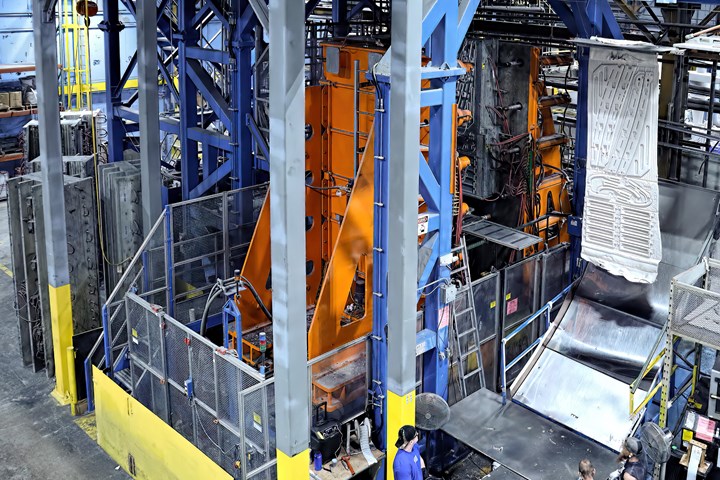
Teaching Kids About the ‘Magic’ of Manufacturing

How does a bunch of plastic pellets get transformed into a product such as a swimming-pool ladder? That’s the practical “magic” of manufacturing that engages young people who visit Confer Plastics’ blow molding plant for the first time. (Photo: Confer Plastics)
Something struck me while I was interviewing the head of a blow molding company for the upcoming On-Site feature in the April issue of Plastics Technology. Bob Confer, president of family owned Confer Plastics in North Tonawanda, N.Y., was telling me about the perennial shortage of available labor, made worse by declining school enrollments in New York State. Confer Plastics, he said, was lucky in having nearly a quarter of its employees in the “20-year club” – indicating their lengthy tenure at the company. But Confer Plastics still has the challenge of finding new employees to make up for attrition and support growth (the company has added its 20th accumulator-head machine).
To attract young people to jobs at Confer Plastics, as part of the firm’s community outreach program, the company sponsors open houses and offers internships and “shadowing” programs through which high-school juniors and seniors spend a day with an employee to learn about manufacturing careers. The company welcomes visitors from community organizations and students from local high schools, elementary schools and colleges. “It’s an eye-opener for them,” Bob Confer says, “to see tiny beads of plastic transformed into all these parts.”
That last bit made me stop and think. I’ve heard other molders tell me how they hoped a profusion of glowing touchscreens throughout their plants would convince today’s smartphone-dependent teenagers that “this isn’t your grandfather’s sooty old factory.”
I had nodded approvingly at such remarks in past interviews. But Bob Confer’s comment showed me a new angle on the matter. There might be something less than optimal about hiring kids who look forward to poking touchscreens or keyboards all day long, if they don’t have a real feeling and a real concern for what’s physically happening inside the machine that is reflected in those blinking screens.
How much more valuable might those new recruits be if they were captivated by the amazing transformation of a bunch of homely pellets – or “nurdles” as they are called on Confer’s website – into useful, enjoyable products such as kayaks, swimming-pool ladders and hot-tub enclosure panels. So captivated that they wanted to know more about how that happens, what about the pliant nature of plastics and the electric, hydraulic and mechanical forces in the machinery makes it all possible.
When, fresh out of school, I joined the staff of Plastics Technology, I was motivated by a hunger to see how things really work, to learn what goes on “behind the scenes,” so to speak, to put all those cars on the road, packages of food on store shelves, and innumerable useful objects in every room of my home. That’s the kind of eagerness for knowing and participating in the real world of making things that we should encourage in today’s generation that’s so absorbed in apps and e-this and e-that as substitutes for physical interaction with people and their environment. Success in that effort would be good for young people, good for society and good for plastics.

Leave a Reply